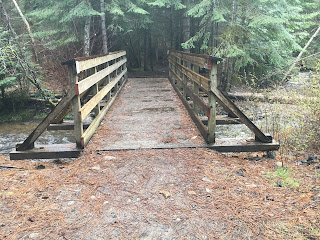Expedition Planning
Step #1: Pick a spot
Right now I just use a map survey of the cache map on Geocaching.com. I'm sure as we progress in caching we will get a bit more involved in the specific types of caches we want to search for. There is a GeoTour going on in my area currently, as well.
I start by scanning for traditional caches in "green areas," which indicates a higher likely hood of it being trails. This is because we want to hike, not park and grab. Then I check out the green area to verify it is trails and not just a city park.
Once I decide on an area, I scan recent logs to make sure the cache is likely to be there. I also scan for cache size now, wanting at least small's (and hopefully at least one large!) when out for a hike. I add likely candidates to a list to share with Mo.
Next, I load up the GeoTour list and add any of those caches which are near our planned hike to the expedition list. My goal is to put about 10 caches on a list, although we may not hit them all.
Step #2: Research
This step isn't necessary, but I enjoy it and I feel it makes it easier in the field. I make a list of all the caches in that week's expedition list:
* Cache name
* Cache code
* The hint
* Size and whether it contains any trackables
* Any notes to of interest from recent logs, like tick warnings (!)
I leave a bit of space after each one so I can make notes in the field. These come in handy after the expedition when I am logging the cache.
Step #3: The Equipment
I was already an avid outdoorswoman, so no need for new gear! You can see what I bring in the photo:
* Waterproof day pack
* Rain coat (this is the PNW)
* Cache bag, which contains swag, pens, latex gloves, and my notes.
* My botany bag, but only because it lives in my day pack (plus it holds bug spray and sunblock)
* Garden gloves
* First aid kit
* Tick key
* Trail snack
* Water
* Solar charger
Step #4: Pack a lunch
No need to go hungry! The day begins with a packed lunch (dinner, to be more specific). Roast beef, peanuts and M&Ms for Mo, and a tofu sammie, hummus, and vegetables for vegetarian moi! Yummy food means a happy Mo, and a happy Mo means she will continue to join me in the great outdoors :)
Step #5: Don't forget some cash!
We need some cash on out for after the cache :) The only thing better than tromping around in the woods all day is stopping at a pub on the way back to town for a lovely beer and something greasy!







Comments
Post a Comment